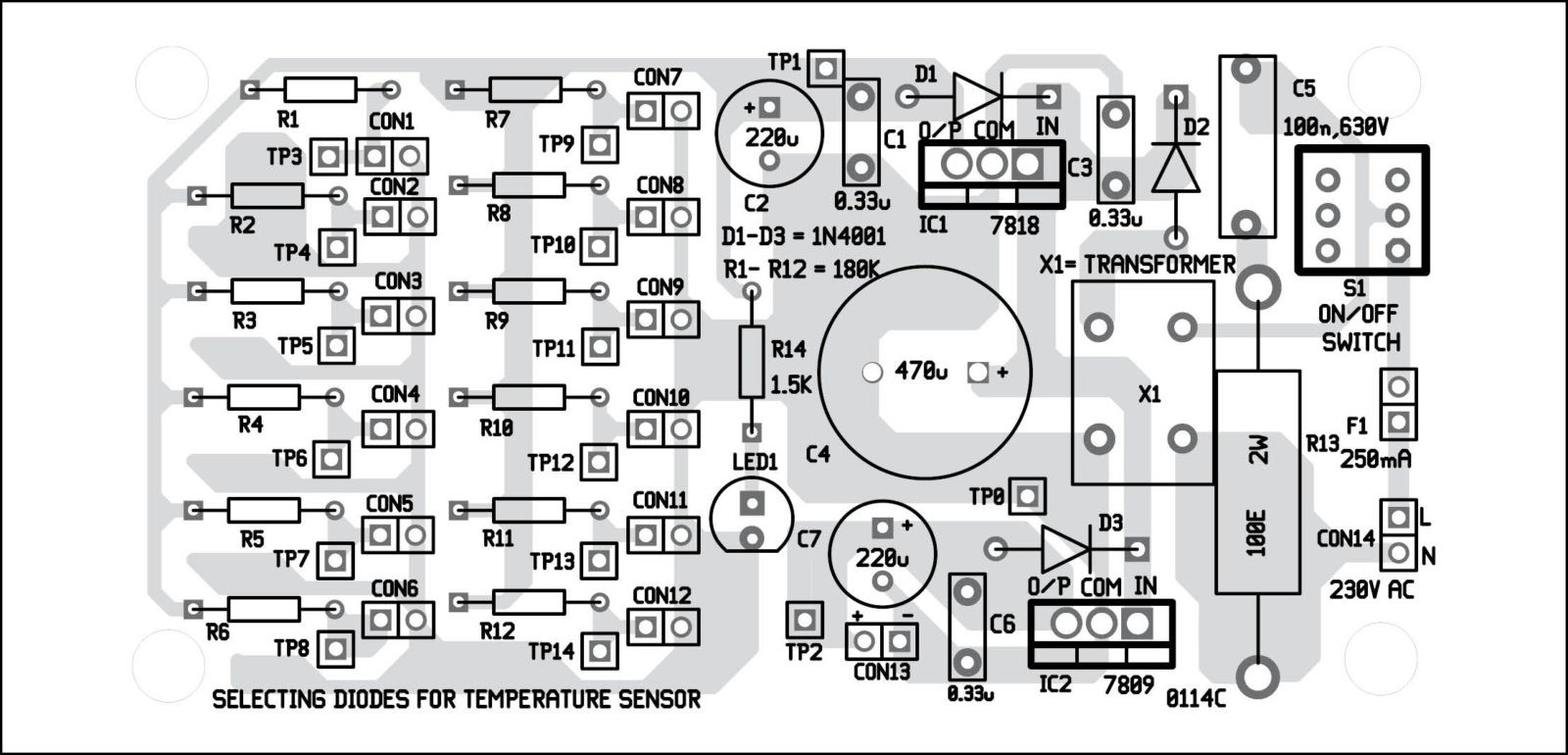Low-cost semiconductor diodes such as 1N914,  1N4148 and 1N400X can be used as temperature sensing diodes in applications where high accuracy is not required. They can be mounted on transistors, power diodes, transformers, heat sinks, rechargeable batteries, crystals, PCB, etc to monitor their temperature.
1N4148 and 1N400X can be used as temperature sensing diodes in applications where high accuracy is not required. They can be mounted on transistors, power diodes, transformers, heat sinks, rechargeable batteries, crystals, PCB, etc to monitor their temperature.
 It is highly desirable to use temperature sensors with linear temperature characteristics and the mentioned diodes are best suited for that. To use them as temperature sensors, these diodes first need to be sorted according to their temperature coefficient. This circuit can help quickly sort different diodes based on their temperature coefficient.
It is highly desirable to use temperature sensors with linear temperature characteristics and the mentioned diodes are best suited for that. To use them as temperature sensors, these diodes first need to be sorted according to their temperature coefficient. This circuit can help quickly sort different diodes based on their temperature coefficient.
Temperature sensing diodes detector: Circuit and working
The circuit diagram of the temperature sensing diodes device for selection of temperature-sensing diodes is shown in Fig. 1. The circuit is built around step-down transformer X1, voltage regulator 7818 (IC1), voltage regulator 7809 (IC2) and three diodes 1N4001 (D1 through D3). The mains supply is stepped down to 21V, 250mA using transformer X1. Diode D2 is sufficient to rectify it since the required output current is typically below 20mA. The linear regulator IC1 provides the 18V power supply for the diodes (connected at CON1 through CON12) to be tested. The linear regulator IC2 provides the 9V power supply for the digital voltmeter (DVM) used for measuring the voltage drop across diodes.



Download PCB and component layout PDFs: click here
Utilising this device, it is possible to test the diodes at around 0.1mA of forward current. The current for their PN junctions is provided through individual resistors R1 through R12. The value of a resistor is much higher that the resistance of the tested diode’s junctions, so changing the diodes will not change the forward current significantly.
 The number of the connectors for the test diodes can be increased or decreased. The device does not need any adjustment or calibration to operate properly. To calculate the temperature co-efficient (TKU) of each diode and to sort the diodes accordingly, we need to measure the voltage drop across the diodes under test.
The number of the connectors for the test diodes can be increased or decreased. The device does not need any adjustment or calibration to operate properly. To calculate the temperature co-efficient (TKU) of each diode and to sort the diodes accordingly, we need to measure the voltage drop across the diodes under test.
To sort the diodes, ensure that all of them are connected in the circuit and the voltage drop (say U1) across each diode is measured one by one at the same temperature, say 25°C. The voltages can be read at TP3 through TP14 with respect to TP0 using the DVM as shown in Fig. 1. Now change the temperature to, say, 40°C, and take the measurements (say U2) again. We can use an electrical equipment, such as a heater, to produce the second temperature. So now the temperature coefficient of the PN junction for a diode will be:
TKU = (U1-U2)/(T1-T2), mV/°C
The voltage drop change of the PN junction due to temperature change is linear, so we should take measurements at only two temperatures for each diode. The test temperatures can be the same for all the diodes or different. Most of the diodes can be used in the temperature range of -25°C to +150°C without any problem. The temperature coefficient of most of the PN junctions is in the range of -1.3mV/°C to -3mV/°C, so we can use these diodes as sensors.
Construction and testing
An actual-size, single-side PCB for the device is shown in Fig. 2 and its component layout in Fig. 3. After assembling the circuit on PCB, enclose it in a suitable plastic case.
To test the temperature sensing diodes detector circuit for proper functioning, verify correct power supply for the diodes and DVM at TP1 and TP2 with respect to TP0. Voltage drop across each diode can be verified at TP3 through TP14.
The author worked as a researcher and assistant professor in Technical University of Sofia (Bulgaria) and a lecturer in Kingdom of Morocco before he started working as an electronics engineer in the private sector in Bulgaria








